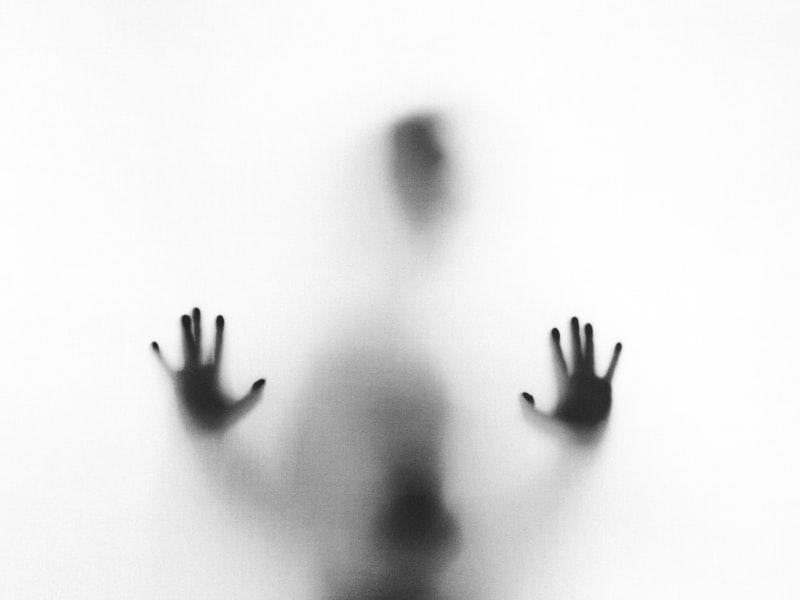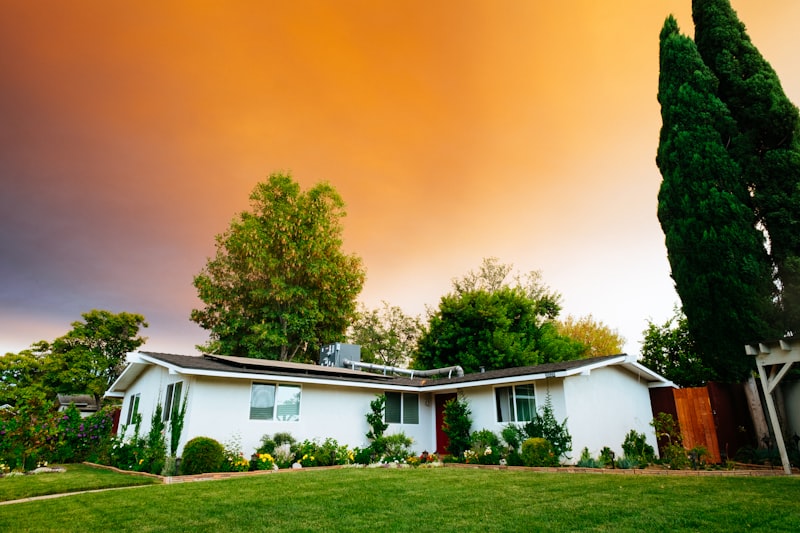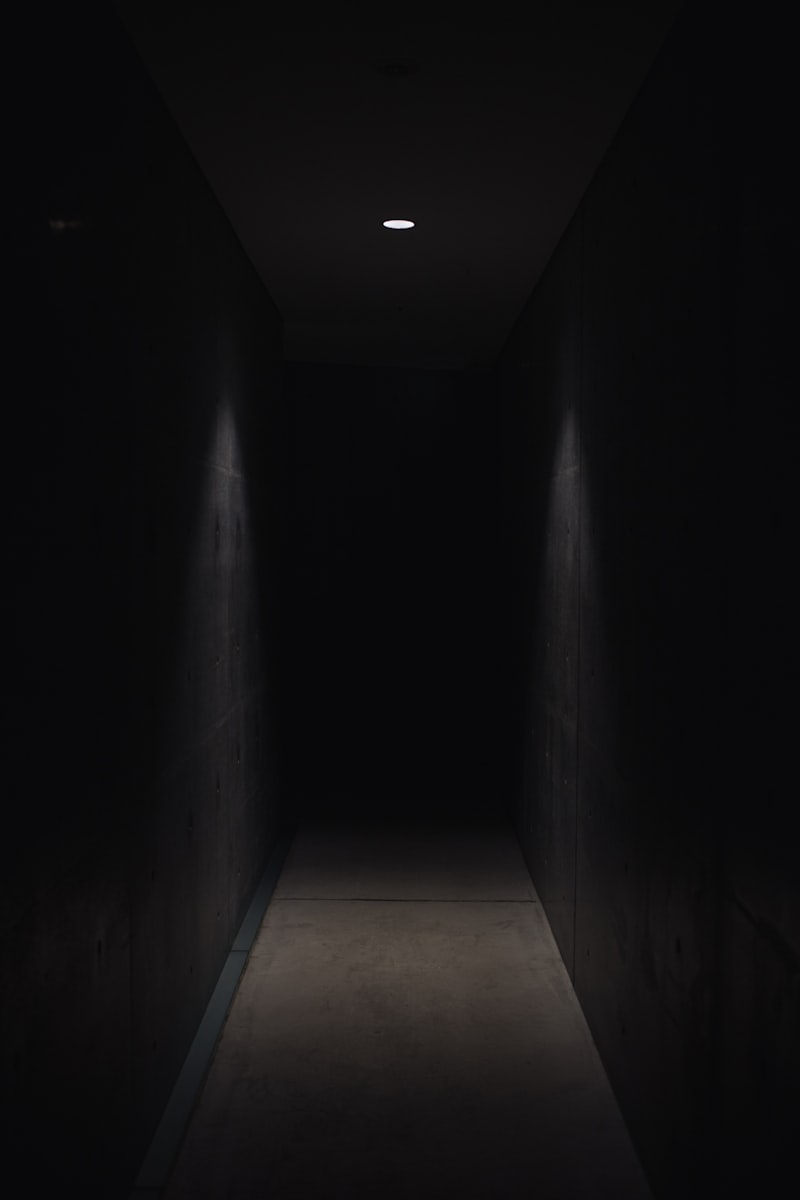Ever wondered what lurks behind the screen in your favorite horror movies? Many of these spine-chilling tales have roots in real-life encounters with the supernatural. From the eerie corridors of the Stanley Hotel that inspired Stephen King’s ‘The Shining’ to the sinister events at the Amityville Horror House, reality often proves to be the most terrifying muse for filmmakers.
One of the most iconic horror films, ‘The Exorcist,’ draws its inspiration from a chilling 1949 case of demonic possession in Maryland. The horrifying ordeal of a young boy named Roland Doe captivated the nation and became the foundation for this bone-chilling tale of exorcism and evil.
In a similar vein, the tragic tale of the Perron family’s haunting in their Rhode Island farmhouse became the basis for ‘The Conjuring.’ Their terrifying experiences with malevolent spirits and paranormal investigators Ed and Lorraine Warren continue to send shivers down the spines of audiences worldwide.
For those who dare to explore the darker side of reality, the haunting of the Bell Witch in Tennessee provides another chilling example. This centuries-old legend of a vengeful spirit tormenting the Bell family inspired numerous adaptations, including the spine-tingling film ‘An American Haunting.’
These real-life hauntings not only captivate our imaginations but also serve as cautionary tales of the unknown. As we delve deeper into the mysteries of the paranormal, these stories remind us that sometimes truth is indeed stranger, and scarier, than fiction.
So, the next time you settle in for a night of frights with your favorite horror flick, remember that the eerie events unfolding on-screen may have origins that are far more unsettling than you could ever imagine.
From Exorcisms to Poltergeists: Real-Life Events Behind Horror Cinema

From exorcisms to poltergeists, the eerie tales that inspire horror cinema are often rooted in chilling real-life events. Imagine being in a quiet house where objects move mysteriously on their own, or hearing inexplicable whispers in the dead of night. These are the spine-tingling experiences that fuel some of our favorite scary movies.
One of the most famous examples is “The Exorcist,” a film that shocked audiences worldwide with its depiction of demonic possession. Its inspiration came from a reported case in the 1940s of a boy named Robbie who underwent a series of exorcisms after allegedly showing signs of being possessed. This chilling incident, though disputed by skeptics, sparked widespread fascination and set the stage for countless exorcism-themed horror films.
Similarly, poltergeists, mischievous spirits known for causing chaos, have been the focus of many horror classics. These entities supposedly manifest through unexplained noises, levitating objects, and even physical harm to those around them. One infamous case occurred in Enfield, London, during the 1970s, where the Hodgson family claimed to be haunted by a poltergeist. This haunting, which included furniture moving by itself and unexplained knocking sounds, captivated the public and inspired films like “The Conjuring 2.”
The allure of these real-life horror stories lies in their mystery and the fear of the unknown. What drives a seemingly ordinary location to become a hotbed of supernatural activity? Are these events manifestations of a darker realm, or are they products of overactive imaginations? These questions continue to intrigue filmmakers and audiences alike, pushing the boundaries of horror storytelling.
The next time you settle in for a terrifying movie night, remember that behind every chilling scene lies a kernel of truth. Whether it’s the echoes of an exorcism or the mischief of a poltergeist, these real-life events ensure that horror cinema remains deeply embedded in our collective nightmares.
Haunted Houses: True Stories That Became Hollywood Nightmares
Imagine walking through the creaking corridors of an old mansion, where every shadow seems to whisper secrets of the past. Such is the setting of many spine-chilling movies, where real-life accounts of paranormal encounters provide the foundation for cinematic terror. These stories are not merely fiction but are based on actual events reported by those brave enough to enter these haunted realms.
One such infamous location is the Amityville Horror House. This suburban New York residence gained notoriety in the 1970s when the Lutz family fled their home, claiming they were terrorized by demonic forces. Their horrifying experiences inspired a series of films that continue to haunt audiences today. The chilling realism of their ordeal reminds us that sometimes, truth is indeed more terrifying than fiction.
Similarly, the tale of the Conjuring House in Rhode Island sent shivers down the spines of many. This unassuming farmhouse became the focal point of a case investigated by paranormal experts Ed and Lorraine Warren. Their spine-chilling encounters with malevolent spirits spawned a successful horror franchise, each installment drawing upon the terrifying events that unfolded within those haunted walls.
Haunted houses are more than mere settings for scary movies; they are gateways to the unknown, where the thin veil between our world and the supernatural realm appears fragile. These true stories, adapted into Hollywood nightmares, continue to captivate audiences, reminding us that the most chilling tales are often rooted in reality. As you watch these films, you may find yourself asking: could such horrors really exist, lurking in the darkness of abandoned houses and forgotten places?
Ghostly Encounters: True Tales Behind Iconic Horror Movies
Have you ever wondered about the eerie stories that inspired your favorite horror films? Behind every iconic scare on screen lies a chilling tale rooted in real-life encounters with the supernatural. These ghostly encounters have not only captivated audiences but have also left a lasting impression on the horror genre.
Imagine walking through the halls of an old, abandoned mansion, where shadows seem to dance in the corners of your vision. This was the reality for the crew filming “The Conjuring,” based on the investigations of real-life paranormal investigators Ed and Lorraine Warren. Their encounters with malevolent spirits served as the foundation for one of the most terrifying film franchises in recent memory.
Similarly, the spine-tingling atmosphere of “The Amityville Horror” was inspired by the Lutz family’s harrowing experiences in their haunted Long Island home. Their reported encounters with paranormal phenomena, including disembodied voices and inexplicable cold spots, continue to fuel speculation and fear decades later.
In a different vein, the infamous séances conducted by spiritualists during the early 20th century provided inspiration for classics like “The Haunting” and “Poltergeist.” These films delve into the psychological terror of unseen forces manipulating our world, drawing from historical accounts of séances gone awry.
What about the terrifying tale of Annabelle, the haunted doll? This malevolent toy, housed in the Warrens’ Occult Museum, has inspired multiple films, including “Annabelle” and “Annabelle: Creation,” based on its alleged ability to manipulate and harm those who come into contact with it.
These true tales behind iconic horror movies remind us that sometimes, reality is far more frightening than fiction. Whether exploring haunted houses or facing malevolent spirits, these stories continue to resonate because they tap into our primal fear of the unknown. So, the next time you settle in for a night of frights, remember that the horrors on screen may have roots in experiences that are all too real.
The Amityville Horror: Real-Life Origins of a Horror Movie Legend
The story begins with the DeFeo family. In 1974, Ronald DeFeo Jr. shockingly murdered his entire family in their home at 112 Ocean Avenue in Amityville, New York. The house sat ominously empty for over a year until the Lutz family decided to make it their own. George and Kathy Lutz, along with their three children, thought they were getting a great deal on a beautiful house. Little did they know, they were about to face a series of inexplicable and terrifying events.
From the moment they moved in, strange things started happening. Unexplained cold spots, foul odors, and mysterious green slime oozing from the walls were just the beginning. George Lutz claimed to wake up every night at 3:15 AM, the exact time Ronald DeFeo Jr. committed the murders. The family even reported seeing ghostly figures and hearing disembodied voices telling them to leave the house.
One of the most chilling incidents involved their daughter, Missy, who spoke of an imaginary friend named Jodie. Jodie wasn’t your average imaginary friend, though. Missy described Jodie as a demonic pig with glowing red eyes. Imagine trying to sleep after hearing that!
The Lutz family lasted only 28 days before they fled the house, leaving their belongings behind. They later collaborated with author Jay Anson to write “The Amityville Horror,” a book that detailed their harrowing experiences. The book quickly became a bestseller and was adapted into a hugely popular horror movie, cementing the Amityville house’s place in paranormal history.

But was it all true? Skeptics argue that the Lutz family’s story was a hoax designed to cash in on the horror craze of the time. Some of their claims have been debunked, and there’s a lot of controversy surrounding the truth of their tale.
Psychic Phenomena: True Cases That Inspired Paranormal Activity
Have you ever wondered about the mysterious realm of psychic phenomena? It’s a topic that has fascinated humanity for centuries, delving into the unexplainable occurrences that seem to defy our understanding of the natural world. From premonitions to telekinesis, psychic phenomena encompass a wide range of experiences that challenge conventional science and logic.
One of the most intriguing aspects of psychic phenomena is its association with paranormal activity. True cases of psychic abilities often coincide with eerie events that cannot be easily dismissed. Take, for instance, the story of a woman in a small town who accurately predicted a devastating fire that consumed an old mansion. Her detailed dreams and visions of the event, weeks before it happened, left the community in awe and disbelief.
In another chilling account, a child claimed to see and communicate with the spirit of a deceased relative, recounting personal details that were verified as accurate by family members. Such instances of clear, unexplained communication between the living and the dead raise profound questions about the nature of consciousness and existence beyond our physical realm.
Psychic phenomena are not limited to foreseeing events or communicating with spirits. Some individuals possess the extraordinary ability to move objects with their minds, a phenomenon known as telekinesis. These cases often occur spontaneously and under intense emotional states, suggesting a link between psychic powers and human consciousness that science is only beginning to explore.
Whether you’re a skeptic or a believer, the documented cases of psychic phenomena offer a fascinating glimpse into the unknown. They challenge us to reconsider what we think we know about the limits of human potential and the mysteries that lie beyond our comprehension.
Cursed Objects and Their Influence on Horror Cinema
Imagine a dusty antique mirror hanging innocuously on a wall, reflecting the ordinary. But in horror films, it becomes a portal to the sinister, distorting reality into a nightmare. Such objects, often infused with a dark history or supernatural curse, serve as catalysts for the unfolding horrors, manipulating characters and audiences alike.

Take Annabelle, the infamous haunted doll from the Conjuring universe. A seemingly innocent toy that harbors a malevolent spirit, Annabelle’s presence triggers a series of terrifying events, leaving audiences questioning the boundaries between the mundane and the supernatural. It’s not just a doll; it’s a conduit for fear, embodying the concept that everyday objects can harbor hidden malevolence.

In horror cinema, cursed objects act as metaphors, reflecting deeper fears and anxieties. They challenge the notion of safety in familiarity, turning the ordinary into something profoundly unsettling. Whether it’s a cursed videotape in “The Ring” or a cursed mask in “The Haunting of Hill House,” these objects blur the line between reality and nightmare, compelling us to confront our deepest fears in the darkness of the theater.
Moreover, cursed objects in horror films often serve as reminders of humanity’s vulnerability to the unknown. They tap into primal fears of the supernatural and the uncontrollable, resonating with audiences on a visceral level. Through clever storytelling and visual symbolism, filmmakers transform these objects into harbingers of doom, exploiting our innate curiosity about the paranormal and our dread of the inexplicable.
Urban Legends Come to Life: Haunting Tales Behind Popular Films
Take, for instance, the infamous curse surrounding the film “Poltergeist.” This horror classic about a suburban family terrorized by malevolent spirits was plagued by real-life tragedies among its cast. Rumors swirled about the curse taking lives, linking eerie occurrences on set with the untimely deaths of several actors involved. Such legends lend a spectral aura to the film, adding layers of fear beyond its scripted horrors.
Similarly, the eerie ambiance of “The Exorcist” has transcended its narrative to become entwined with its production. Stories abound of strange phenomena during filming, from unexplained fires to mysterious injuries. The chilling tale of a possessed girl and the desperate battle against demonic forces became synonymous with its own set of eerie occurrences, blurring the lines between fact and fiction in the minds of viewers.
Not all legends are born from horror; some emerge from the realms of science fiction. “The Omen,” a film about the son of Satan born into a wealthy family, is rumored to have been haunted by foreboding events. From unexplained accidents to the uncanny predictions of the film’s eerie plot unfolding in real life, the film’s narrative seemed to bleed into reality, leaving audiences wondering where the story ends and reality begins.
These tales remind us that the power of storytelling extends beyond the screen, resonating in the echoes of urban legends that blur the boundaries of our imagination. As we delve into these haunting narratives, we’re reminded that sometimes, the scariest stories are the ones that creep into our reality, leaving us to question what we truly believe in the dark corners of our minds.
Frequently Asked Questions
Which classic horror movies are based on true ghost stories?
Explore classic horror movies inspired by true ghost stories. Discover chilling tales brought to life on screen, rooted in real paranormal experiences.
How did real paranormal events influence classic horror films?
Explore how real paranormal events have shaped classic horror films, influencing their chilling narratives and eerie atmospheres. Discover the eerie origins behind your favorite scares.
Are there documented cases of hauntings that inspired Hollywood horror?
Explore how documented cases of hauntings have influenced iconic Hollywood horror films. Discover the real-life stories that sparked creativity in filmmakers, shaping the chilling narratives we love on screen.
What are some famous ghostly encounters that inspired iconic horror flicks?
Explore famous ghostly encounters that inspired iconic horror films. Discover chilling tales of real-life paranormal experiences that became the spine-tingling inspiration behind some of cinema’s most enduring supernatural thrillers.
What real-life hauntings inspired famous horror movies?
Learn about the real-life hauntings that inspired famous horror movies. Discover the chilling events and locations that influenced iconic films, offering a glimpse into the eerie origins behind these cinematic tales of terror.


